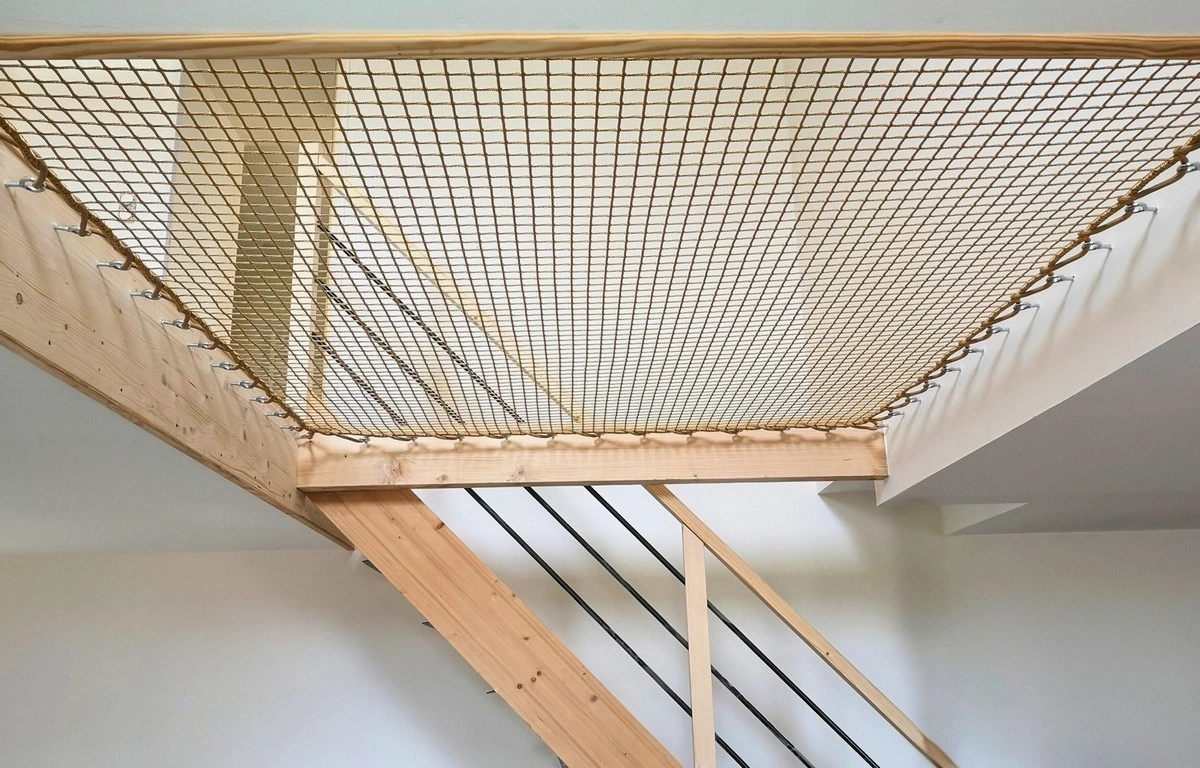When you choose a custom net from Feelnets, you’re investing in premium craftsmanship, high-quality materials and global durability standards. But even the best nets need care and attention to deliver many years of service. In this article we’ll explore realistic lifespans for nets, the key factors that influence durability and practical care tips to ensure your net continues to perform beautifully — whether it’s on a yacht trampoline, a mezzanine lounge or an outdoor terrace.
1. What is a realistic net lifespan?
For netting products similar to those offered by Feelnets, the expected lifespan depends heavily on material, environment and usage. For example:
- In heavy-duty outdoor or marine use, high quality nets with UV-resistant treatment can last somewhere in the 5–10 year range, assuming proper installation and minimal abuse.
- In more extreme conditions — intense sun, frequent mechanical stress, poor installation — nets may degrade much sooner (e.g., 2-4 years).
- For indoor use (less UV, lower stress) the effective lifespan can easily exceed the typical outdoor cycle.
At Feelnets we specify high-grade materials (such as welded-and-sewn PVC mesh or polyester rope mesh) that are chosen “for intensive and long-lasting use” — especially in demanding environments such as charter yachts or resort installations.
Bottom line: With proper care, your Feelnets product can deliver many years of service. But it’s smart to inspect it annually and budget for eventual replacement if you notice significant damage.
2. What influences lifespan?
Several factors play a major role in how long your net will last:
- Material quality & UV-resistance: Nets with UV stabilisation and high grade synthetic fibres resist sun damage and become brittle far more slowly.
- Environmental exposure: Direct sunlight, salt spray (in marine settings), wind abrasion and contact with sharp edges all shorten lifespan.
- Installation & mechanical stress: Poor tensioning, sagging, improper anchorage, or repeated foot-traffic/impact accelerate wear.
- Maintenance and user behaviour: Regular cleaning, repairs and correct use (avoiding dragging, children rough-playing etc) extend life significantly.
3. Key care practices for longevity
Here are practical steps you can follow to keep your net in top shape:
A. Clean regularly but gently
- Use mild soap, soft brush or cloth, low-pressure water rinse. Harsh chemicals or high-pressure jets damage fibres.
- Remove accumulated dust, bird droppings, salt deposits (if outdoor/marine) — these accelerate degradation.
B. Inspect, repair and monitor
- Inspect net edges, seams, fixings, anchor points at least once a year (or more often for outdoor/marine).
- Repair small frays, holes or worn spots immediately rather than waiting until damage spreads.
- Replace fixings, tension ropes or hardware as needed — the net may be fine but mechanical parts may fail first.
C. Ensure correct installation & tensioning
- Avoid sagging or over-tensioning. Both can cause stress points and premature fibre failure.
- Anchor to stable supports; avoid sharp edges, abrasion zones, or contact with grounding surfaces.
- In marine or outdoor conditions, choose materials designed for those specific stresses (salt, wind, UV). At Feelnets we explicitly select such materials for “intensive and long-lasting use”.
D. Consider seasonal/usage adjustments
- If your net is outdoors and exposed to storms or harsh seasons: consider removing and storing it during off-seasons or extreme weather.
- Store nets dry, away from direct sun, when not in use. Fold or roll appropriately to avoid sharp creases or damage.
4. When should you consider replacement?
Even with great care, there comes a point where replacement makes sense:
- When large holes, frays or tears appear that cannot be economically repaired.
- When net’s tension, shape or function is compromised and it no longer performs safely or as designed.
- When the supporting hardware or fixings fail even if the mesh looks fine — because a net is only as strong as its weakest link.
- If the environment has changed (for example increased exposure to UV or salt) and the original specification no longer matches the risk profile.
By adopting a proactive inspection & maintenance routine, you delay this replacement point and get the maximum life-value from your net.
5. Why choose Feelnets for durability?
Feelnets emphasises high-quality materials, custom manufacture and global installation standards. Our reference to “Polyester … best-suited for the constraints that a net can undergo (climate resistance, intensive use, resistance to sea-water, sunscreen…)” speaks directly to durability.
With these practices in place, your Feelnets net becomes not just an attractive feature or luxury accessory, but a long-lasting element of your environment — whether nautical, residential or commercial.
Conclusion
Understanding net lifespan and care is critical for protecting your investment. With high-grade materials, correct installation, regular inspection and thoughtful maintenance, your Feelnets net can serve beautifully for many years. Follow the care guidelines here, schedule annual checks and act promptly on repairs — and you’ll ensure safe, reliable performance, aesthetic appeal and functional longevity.



